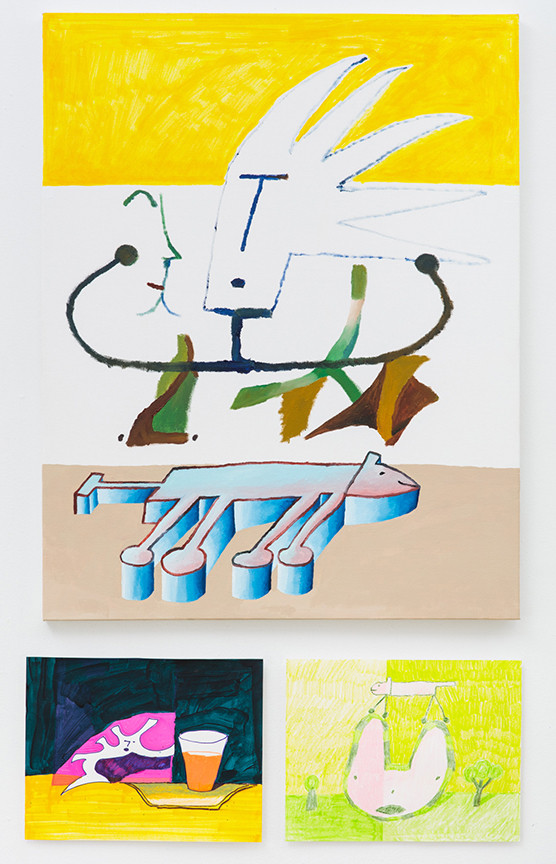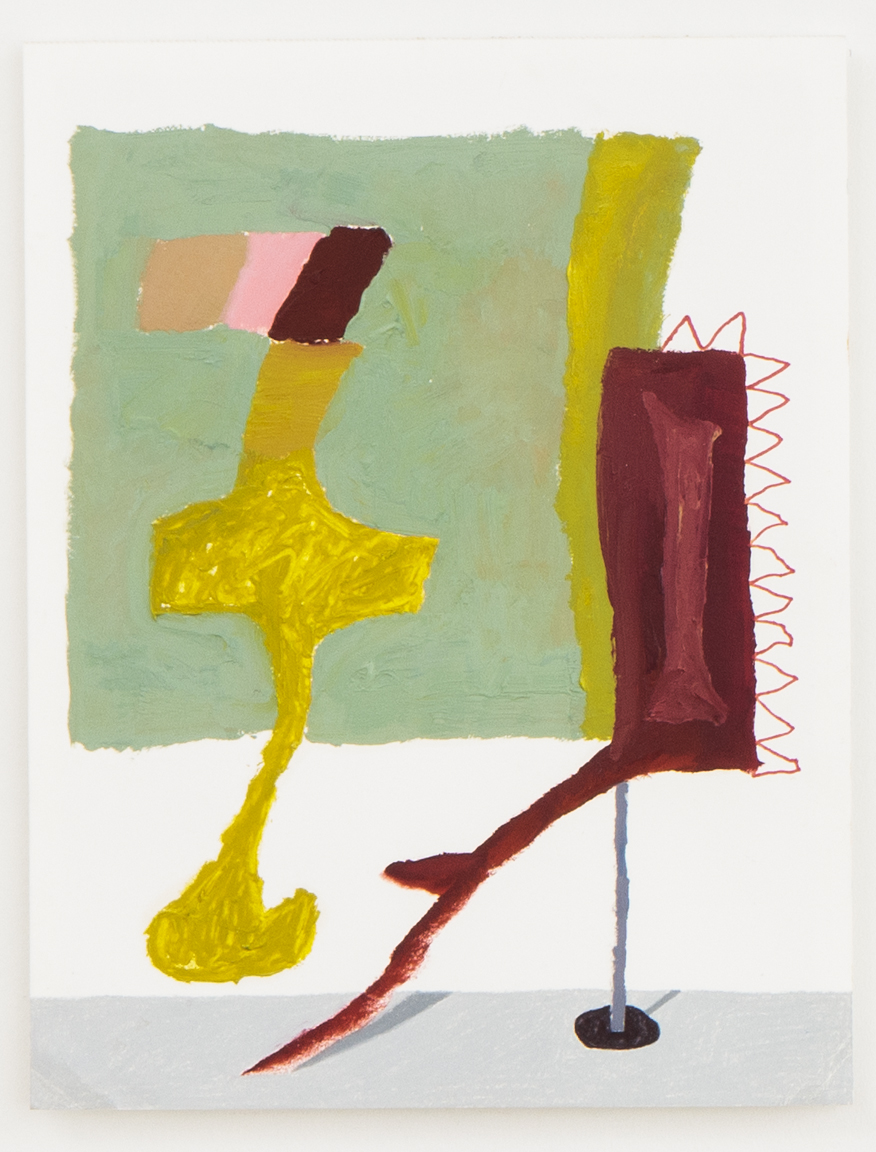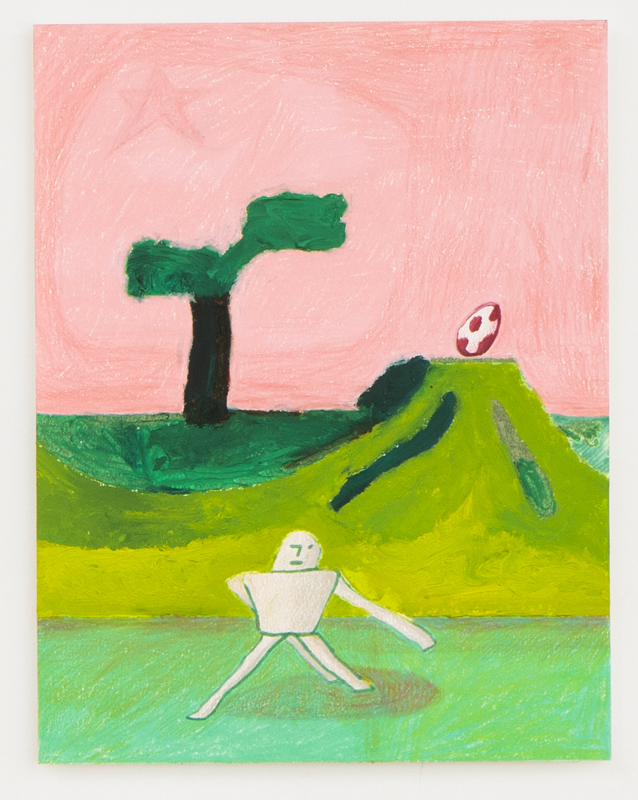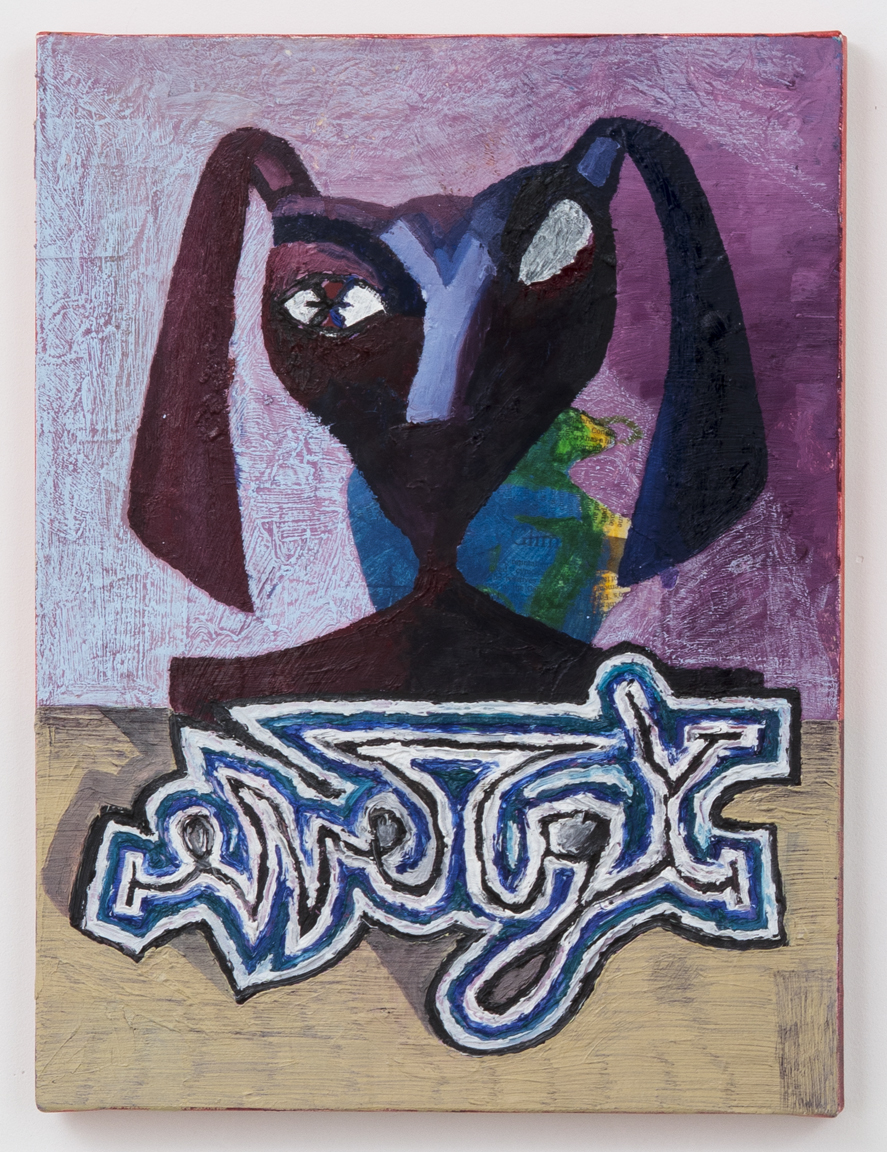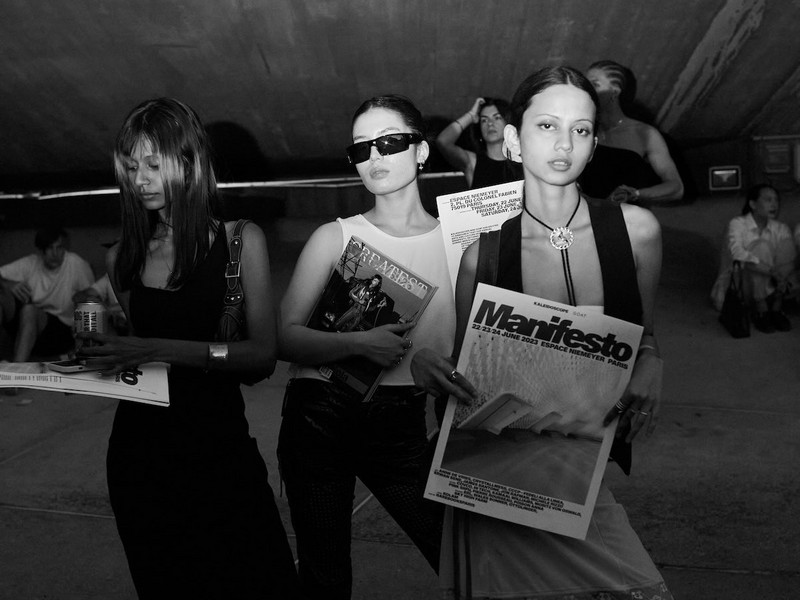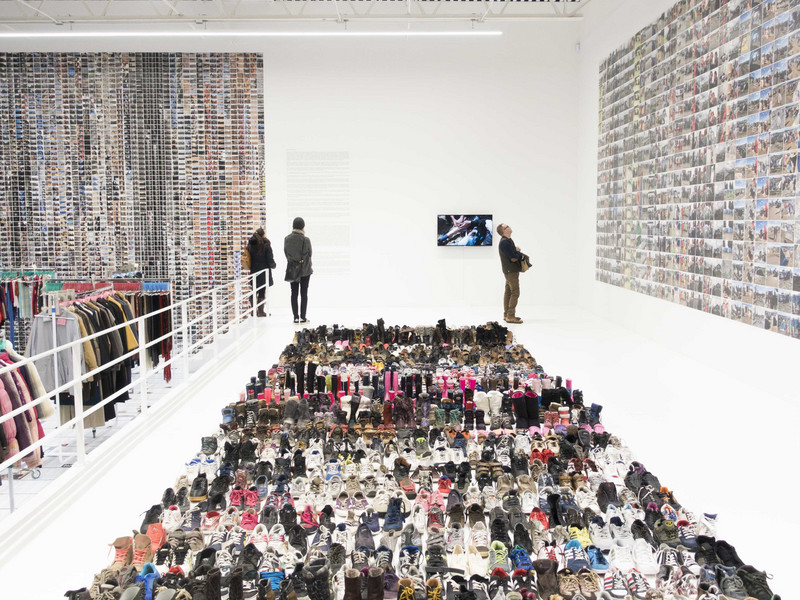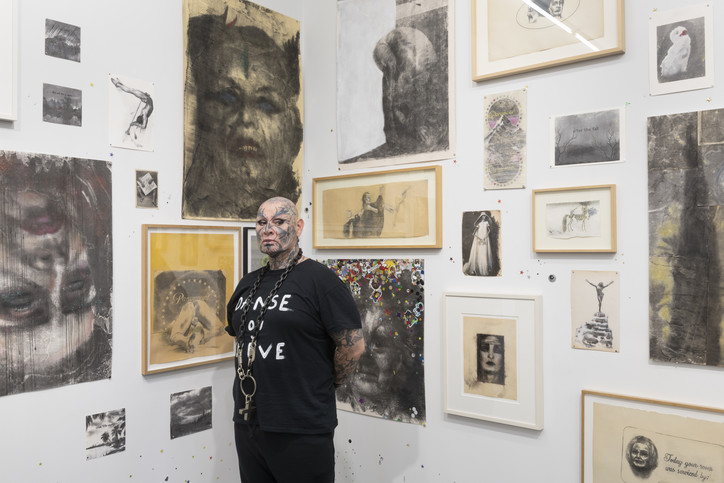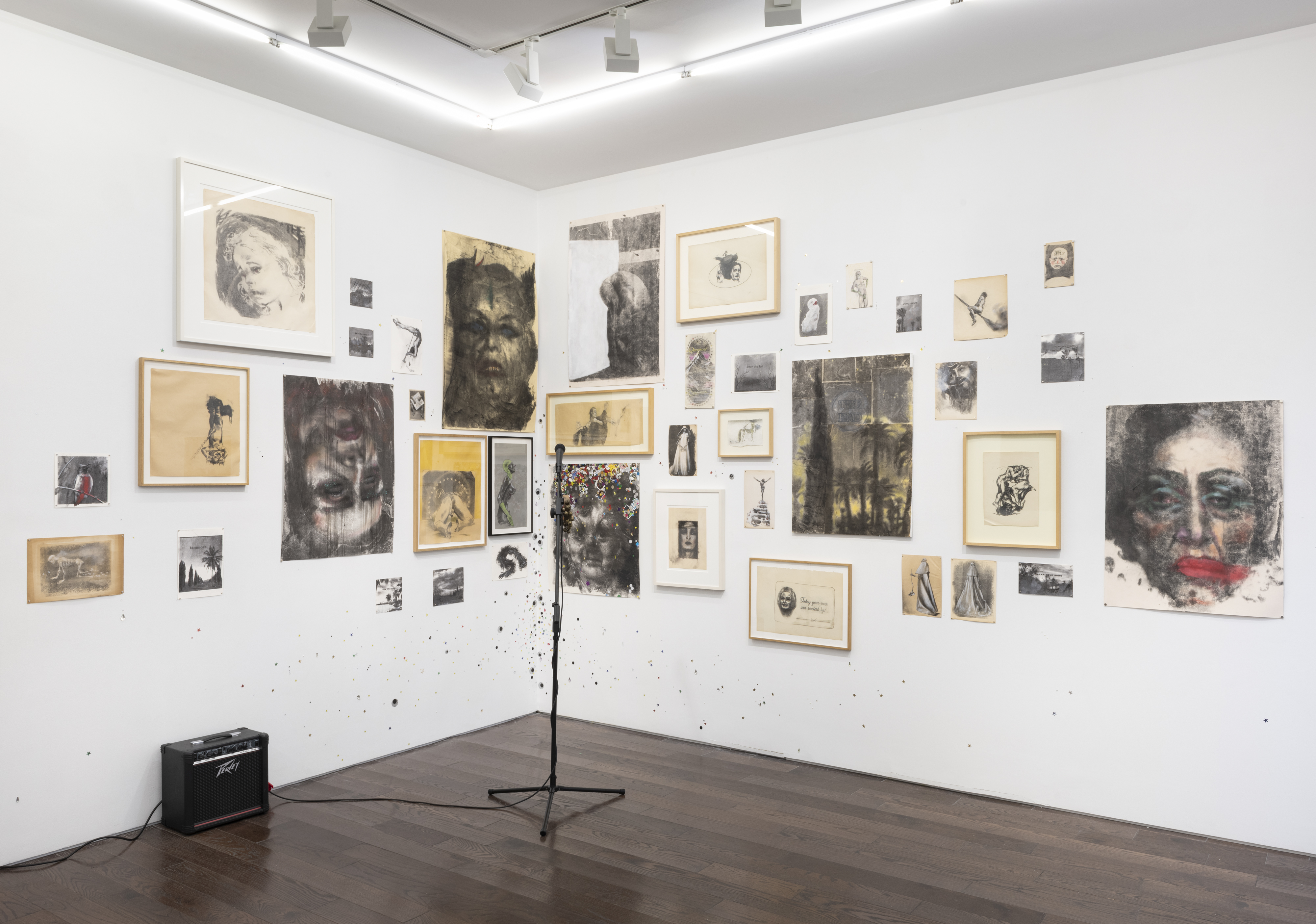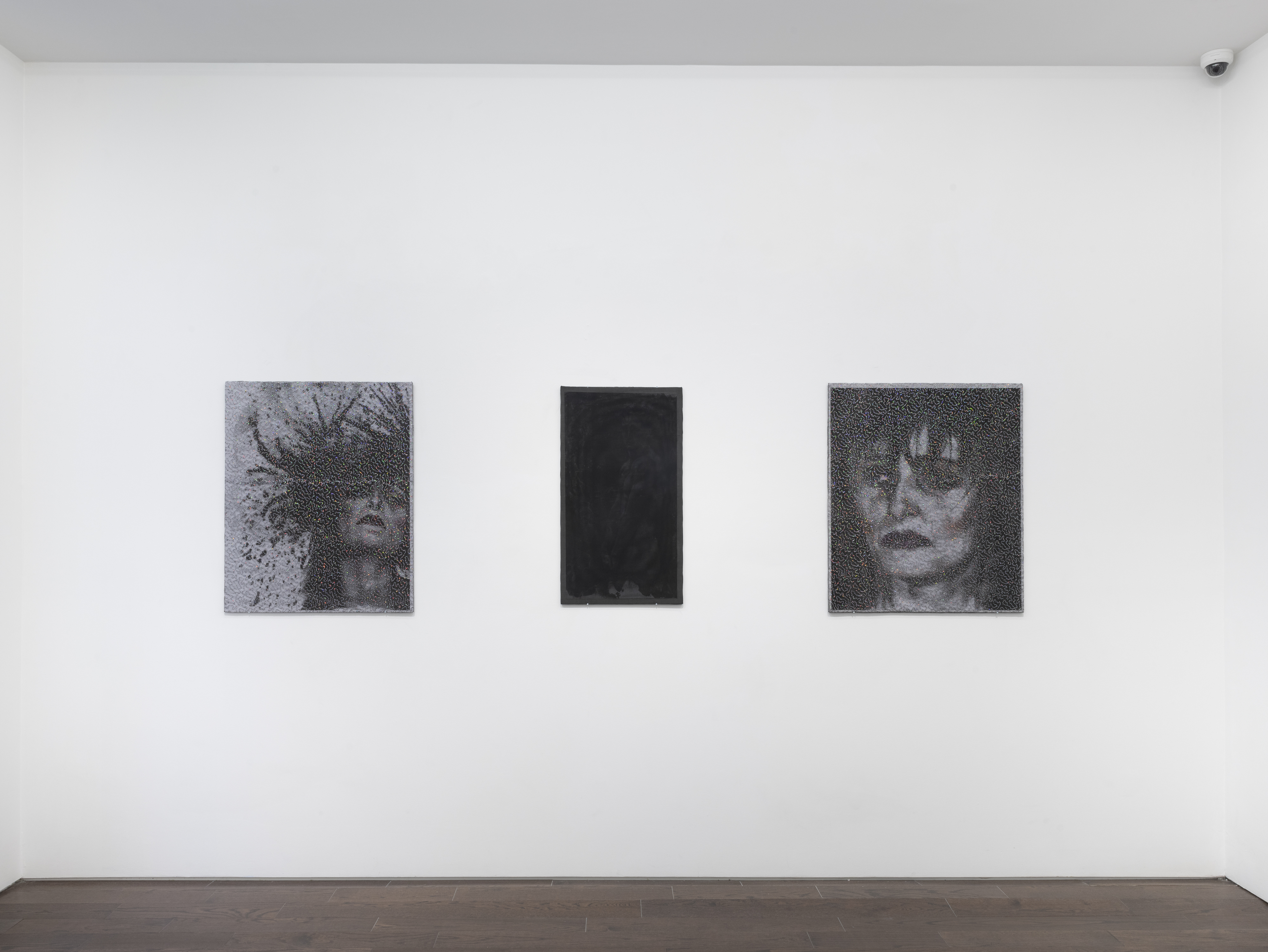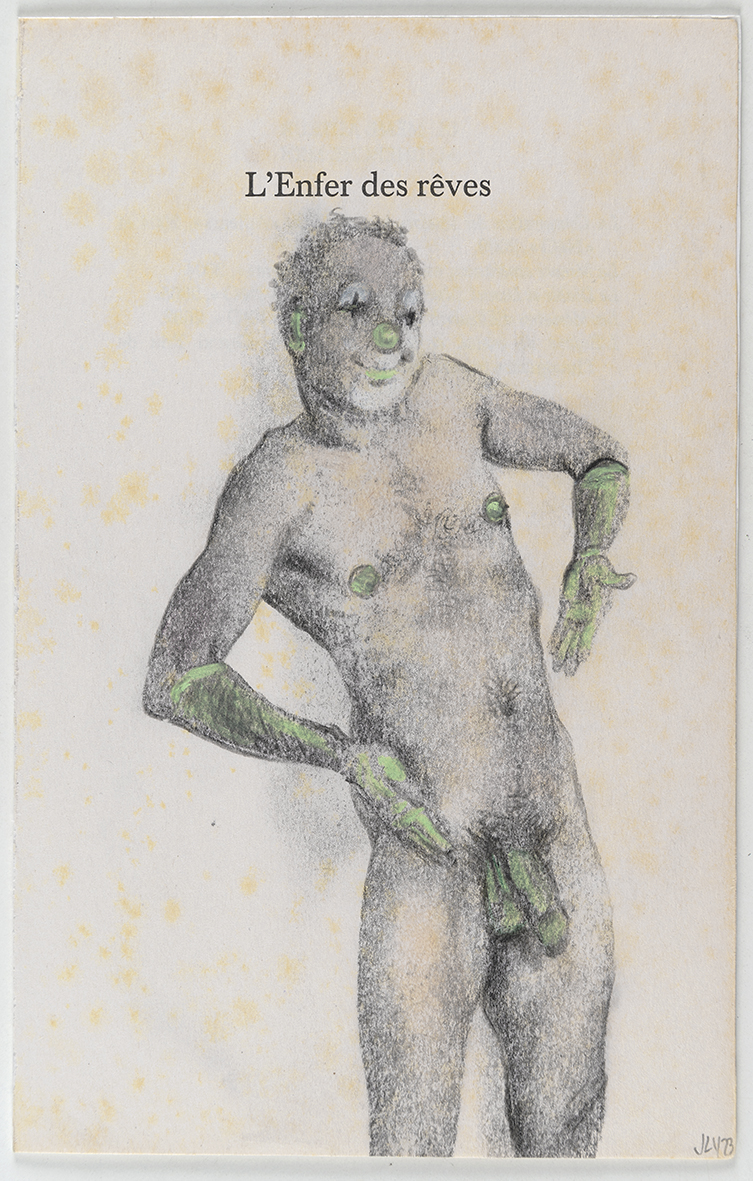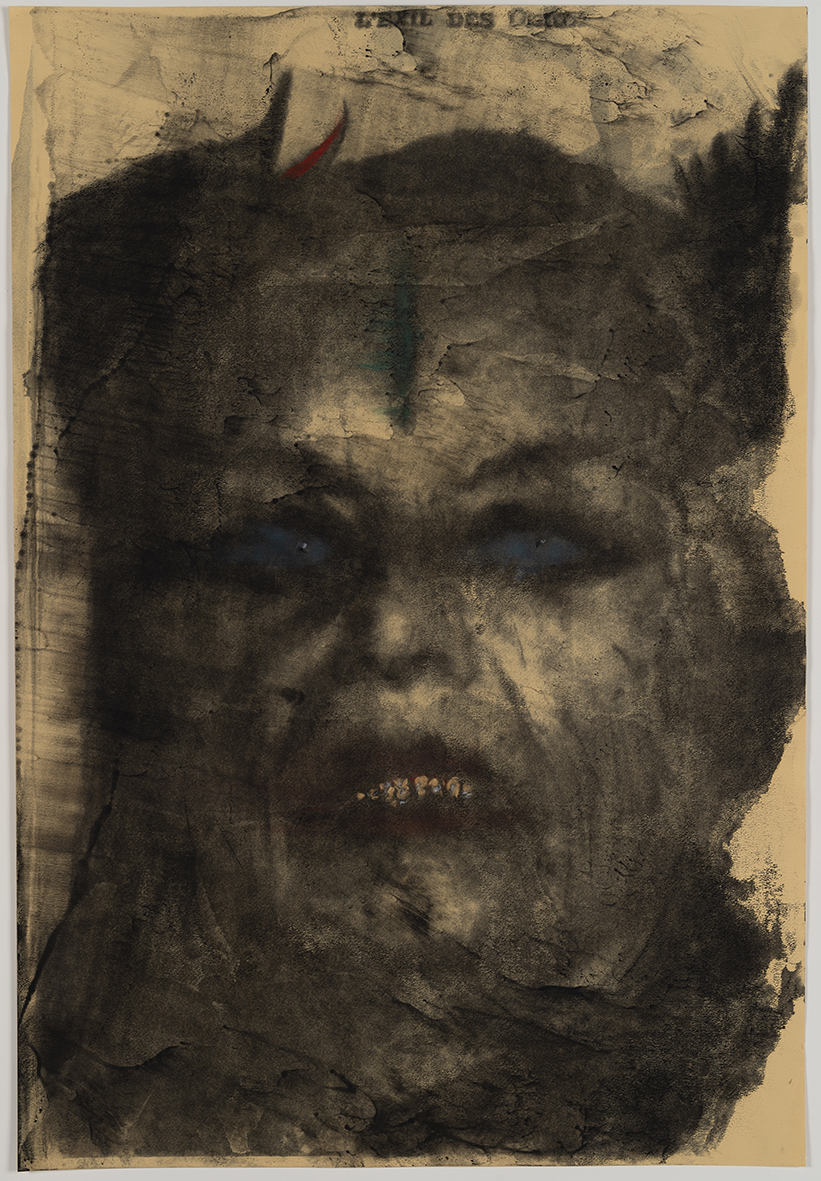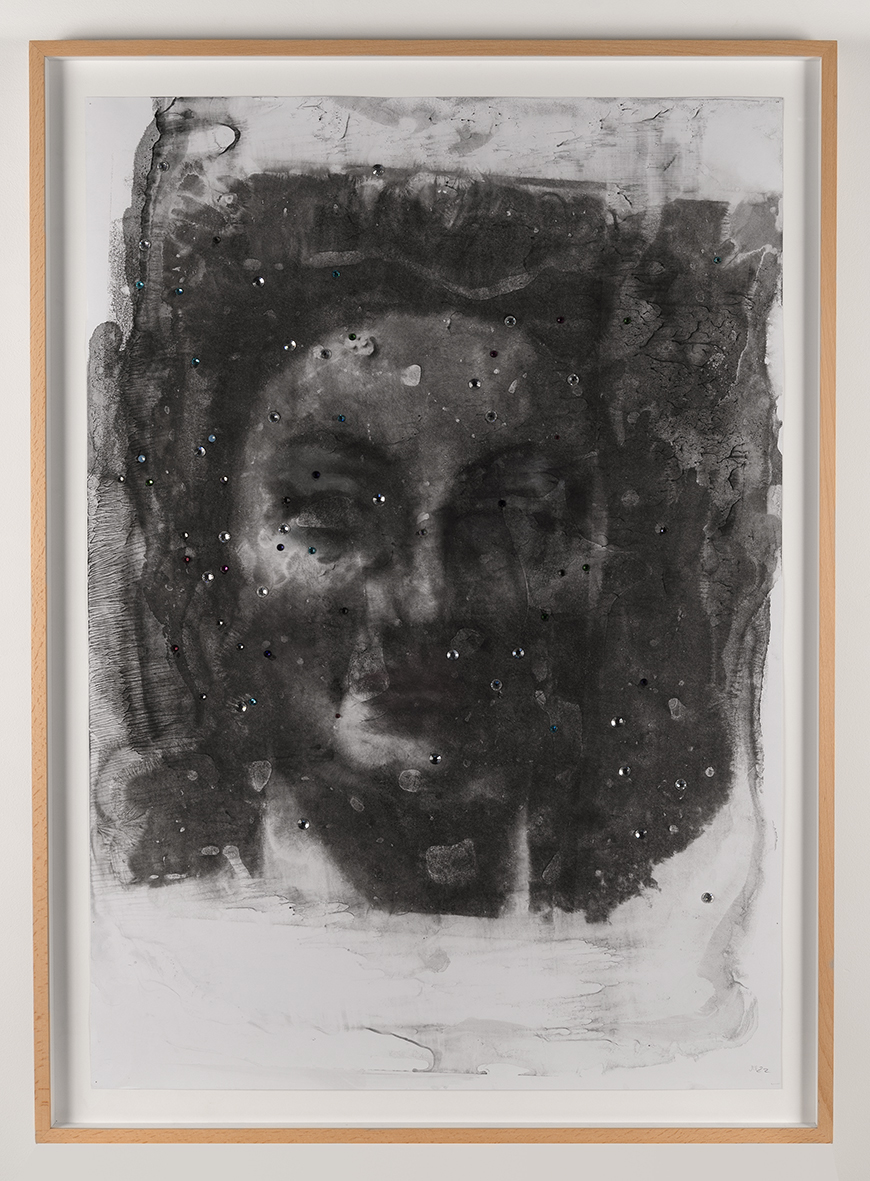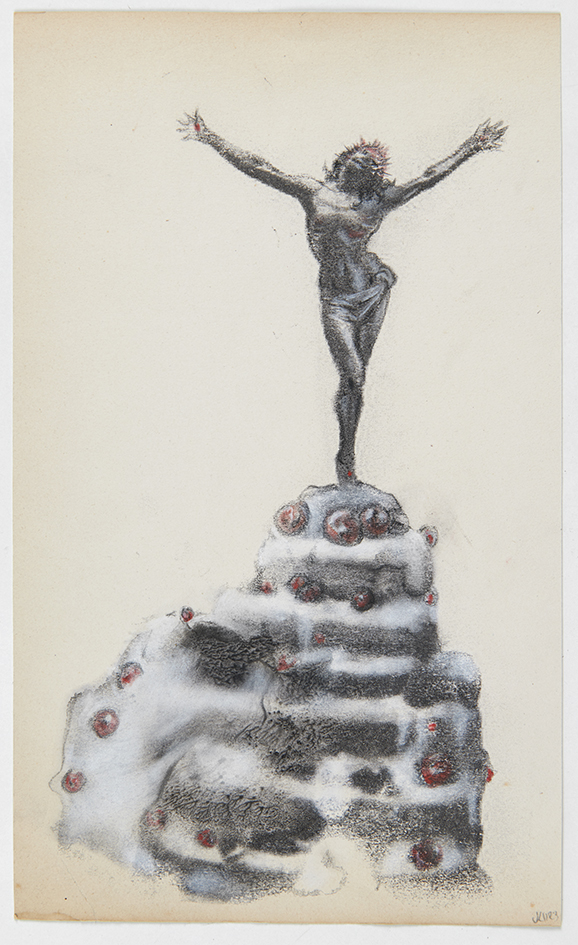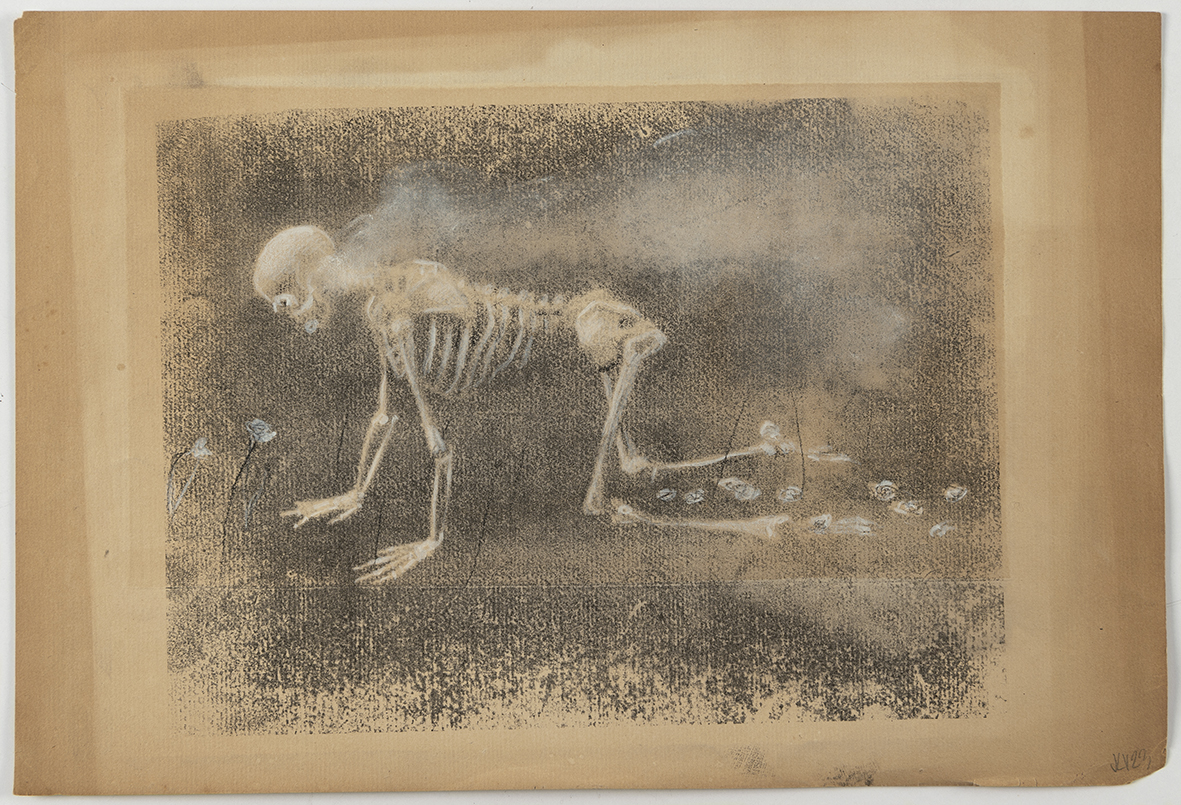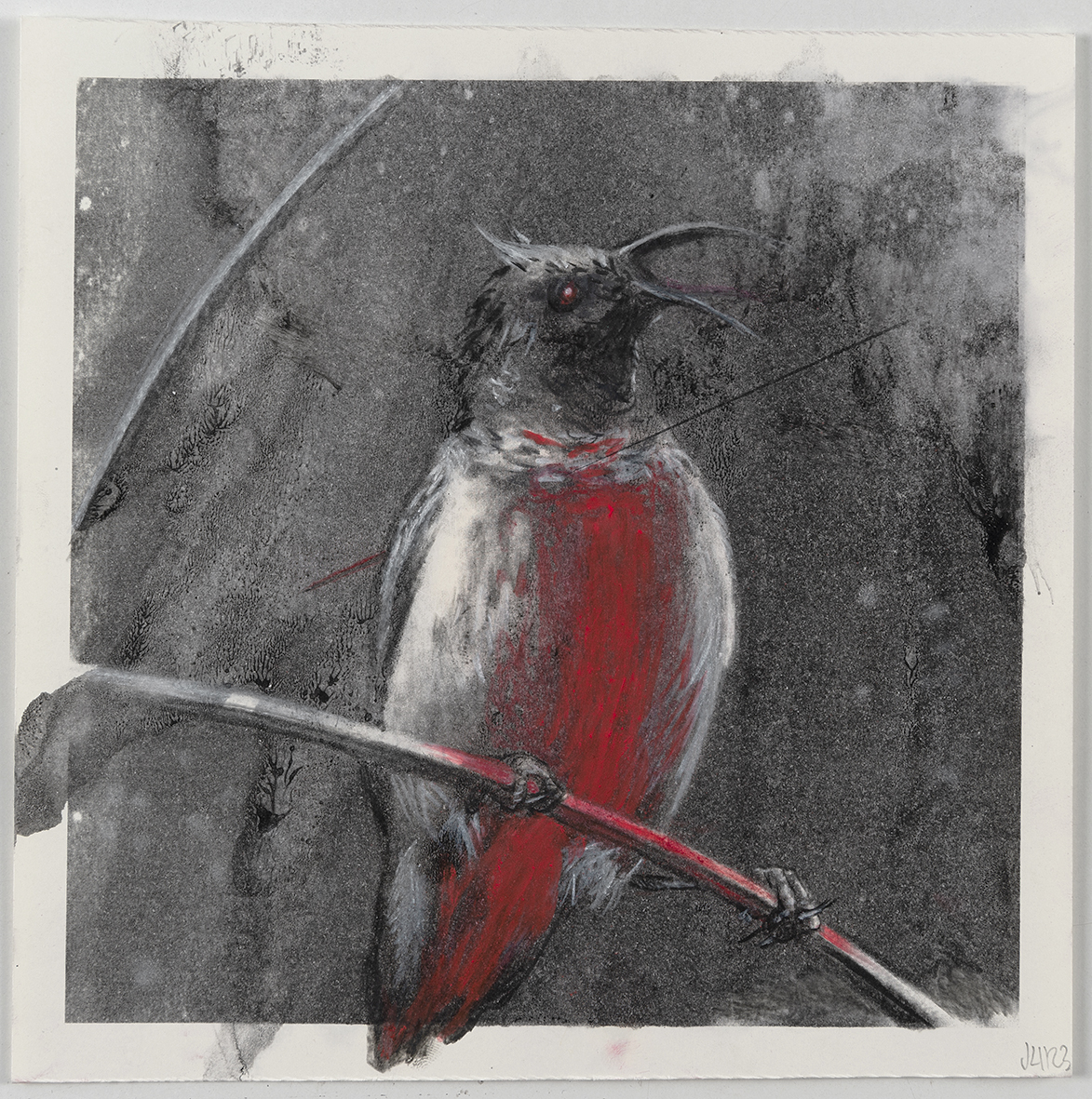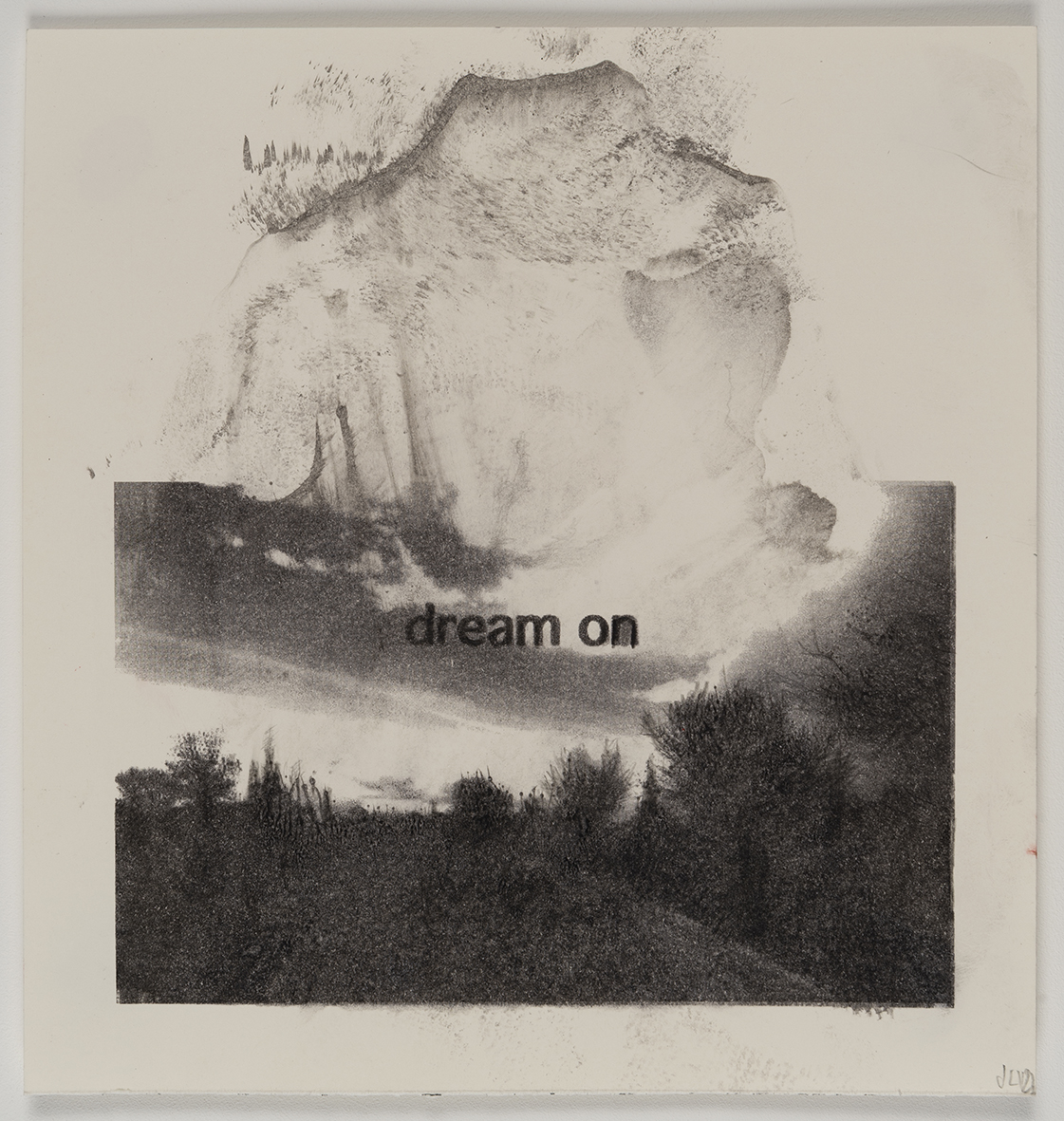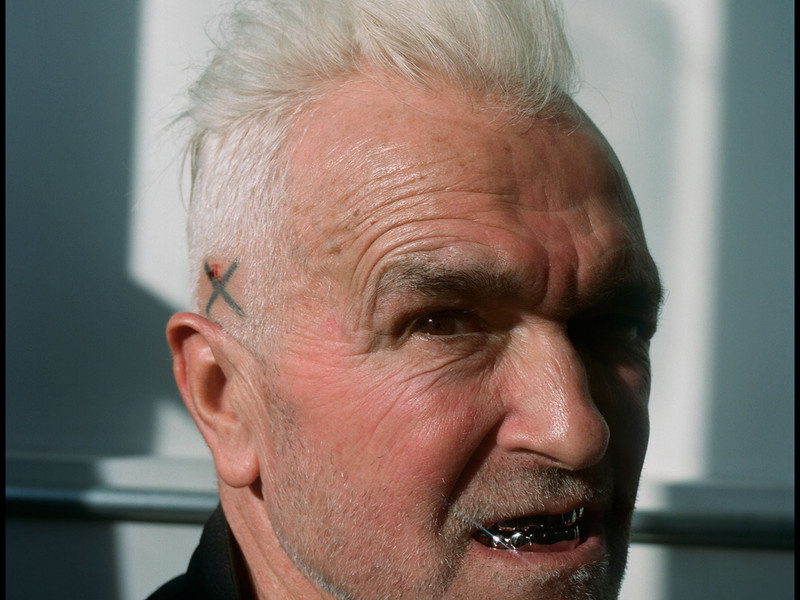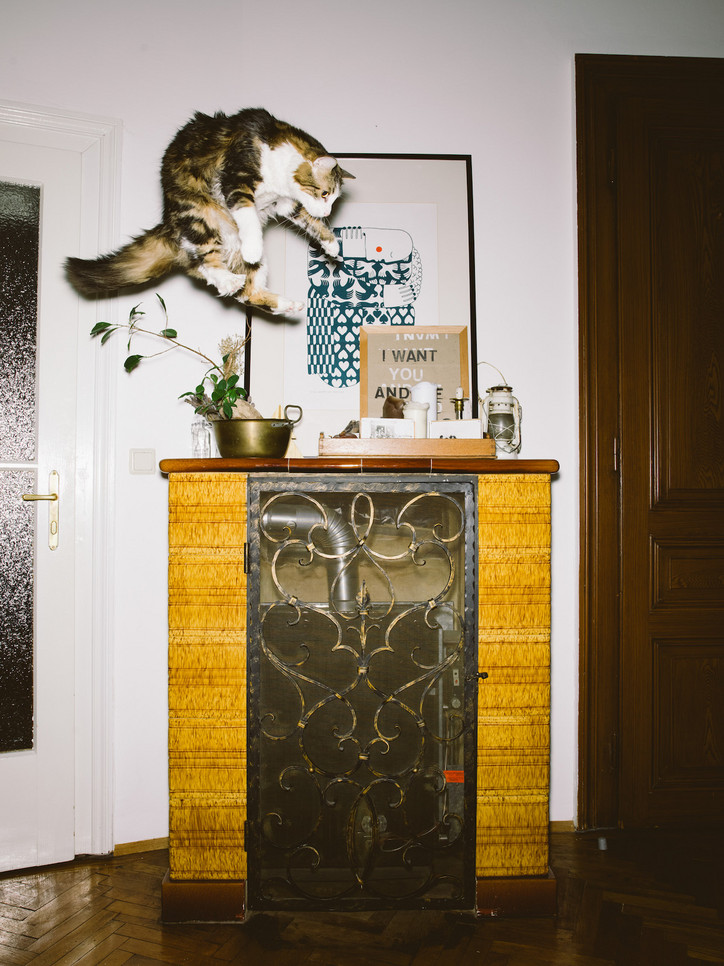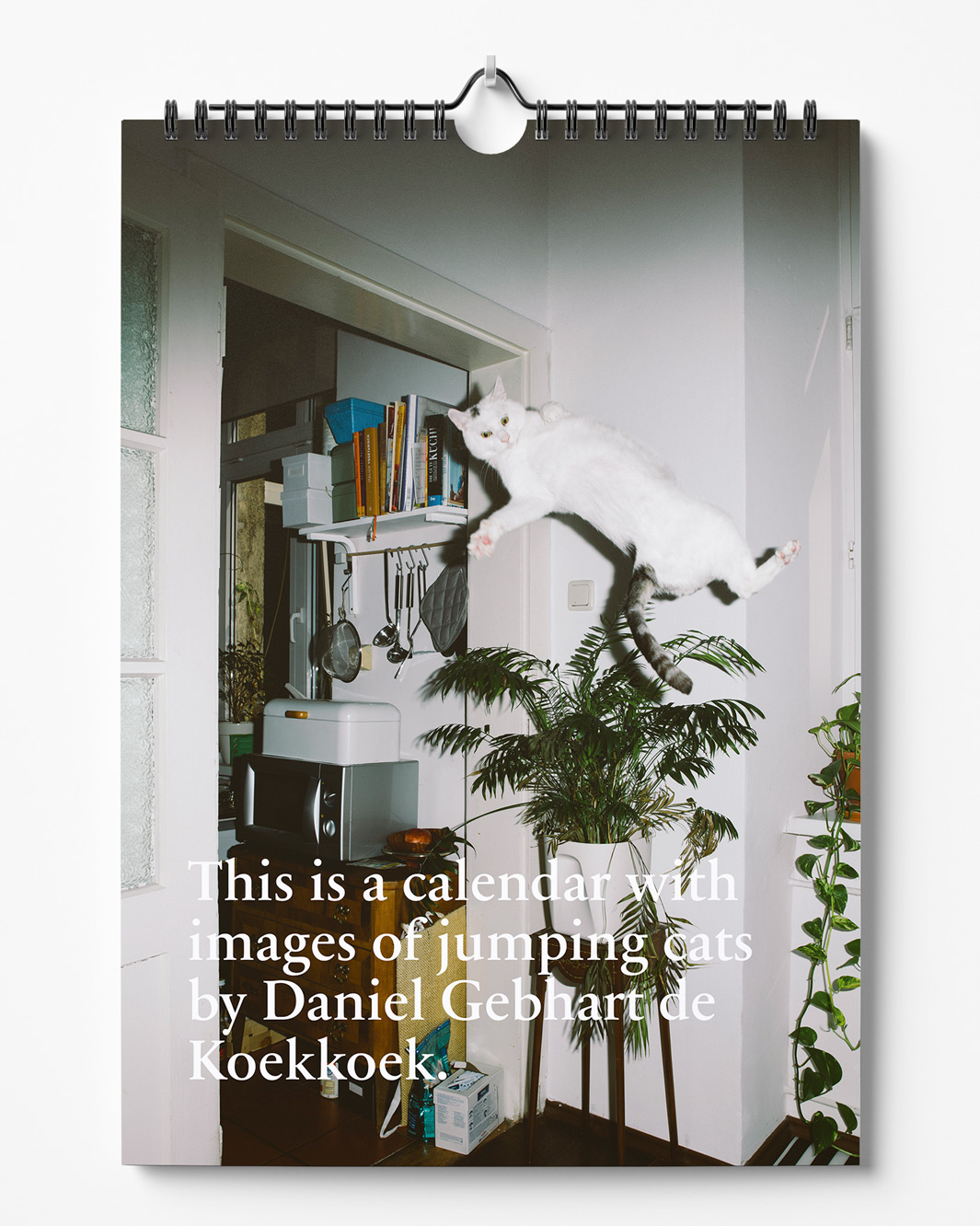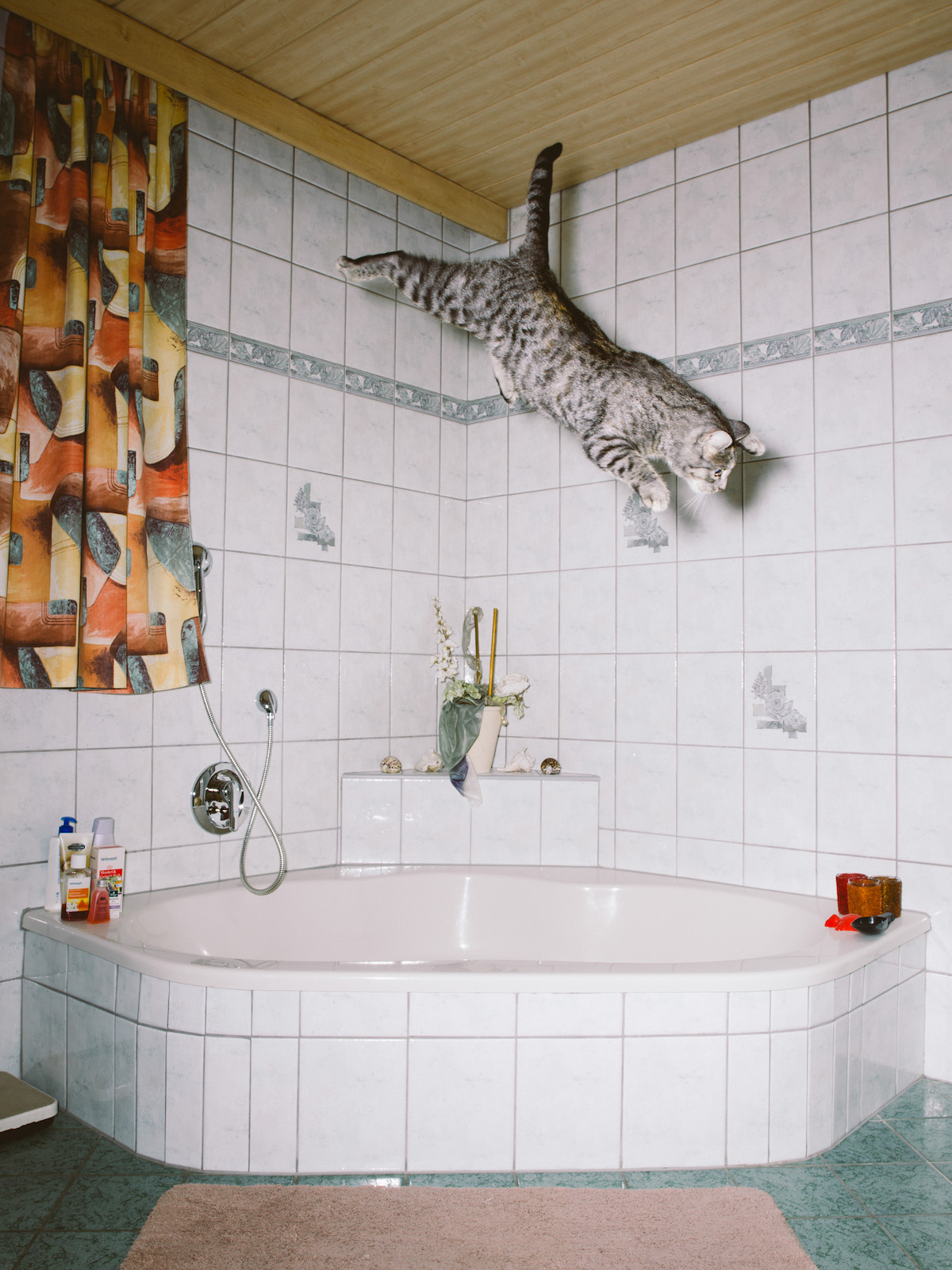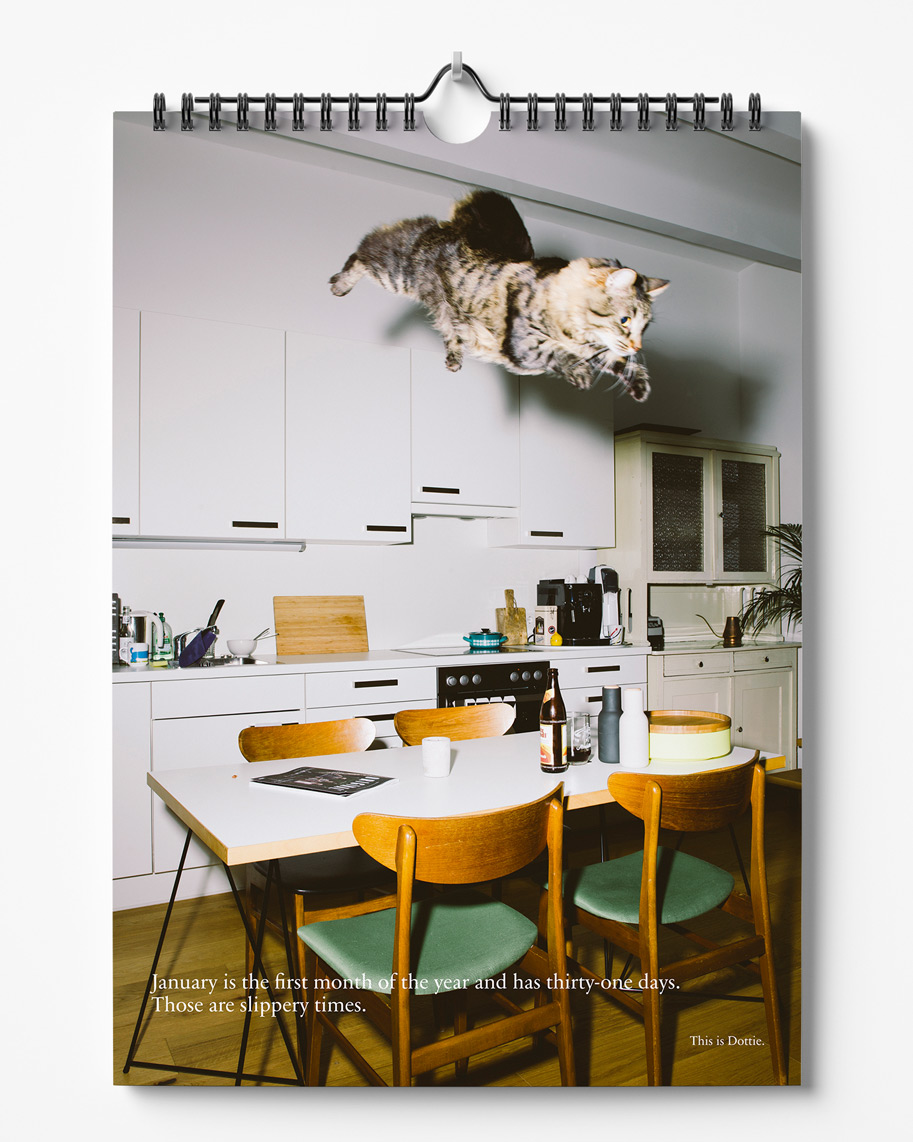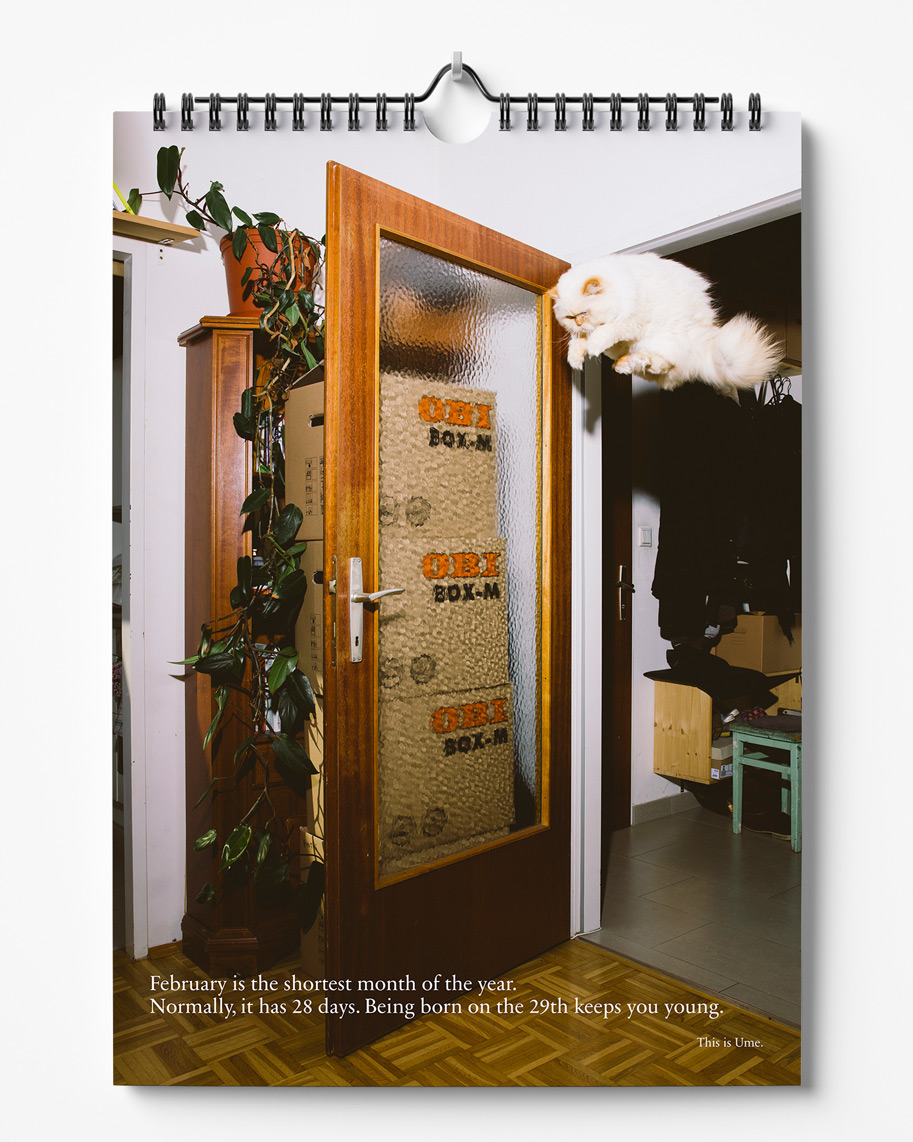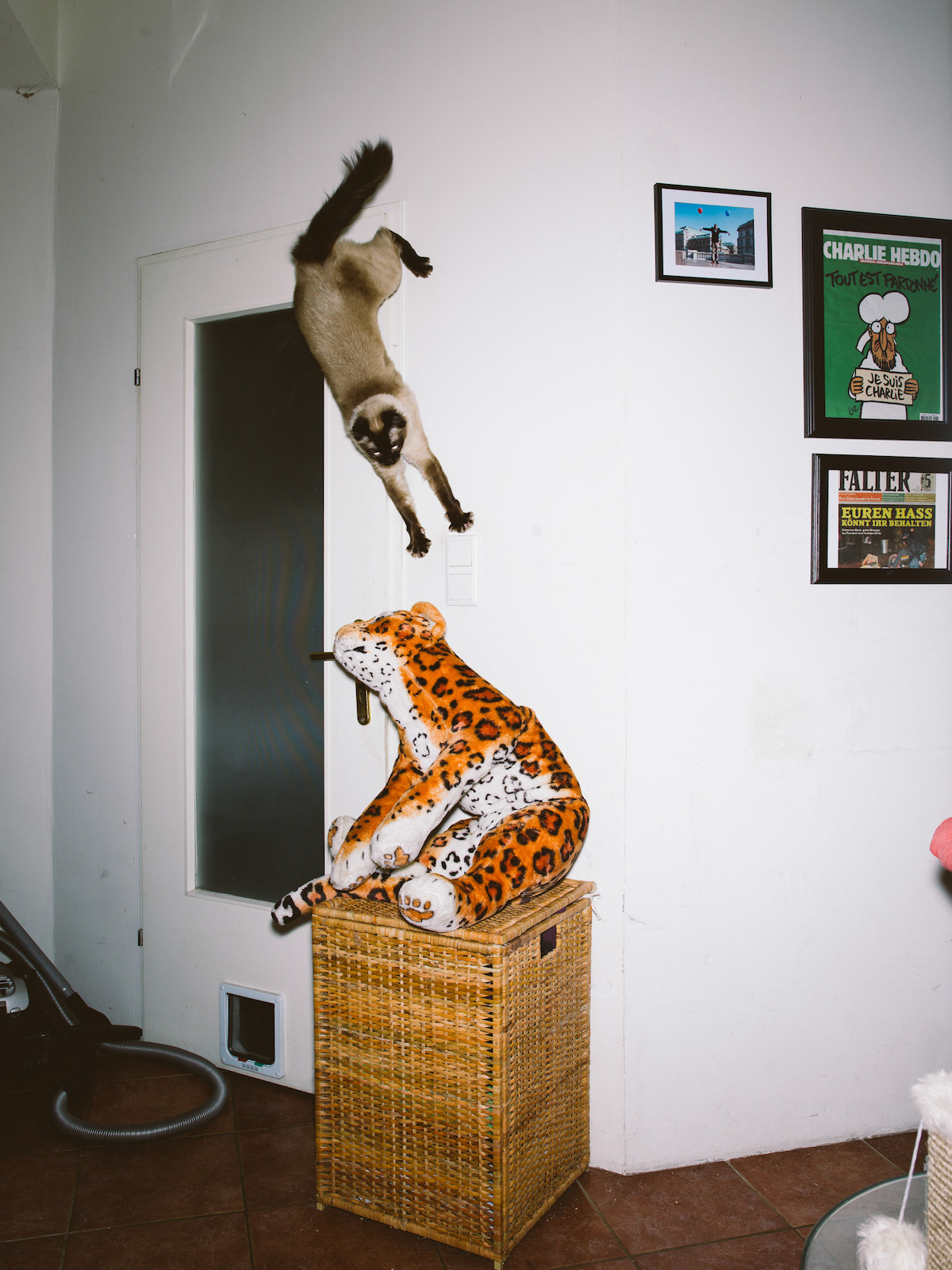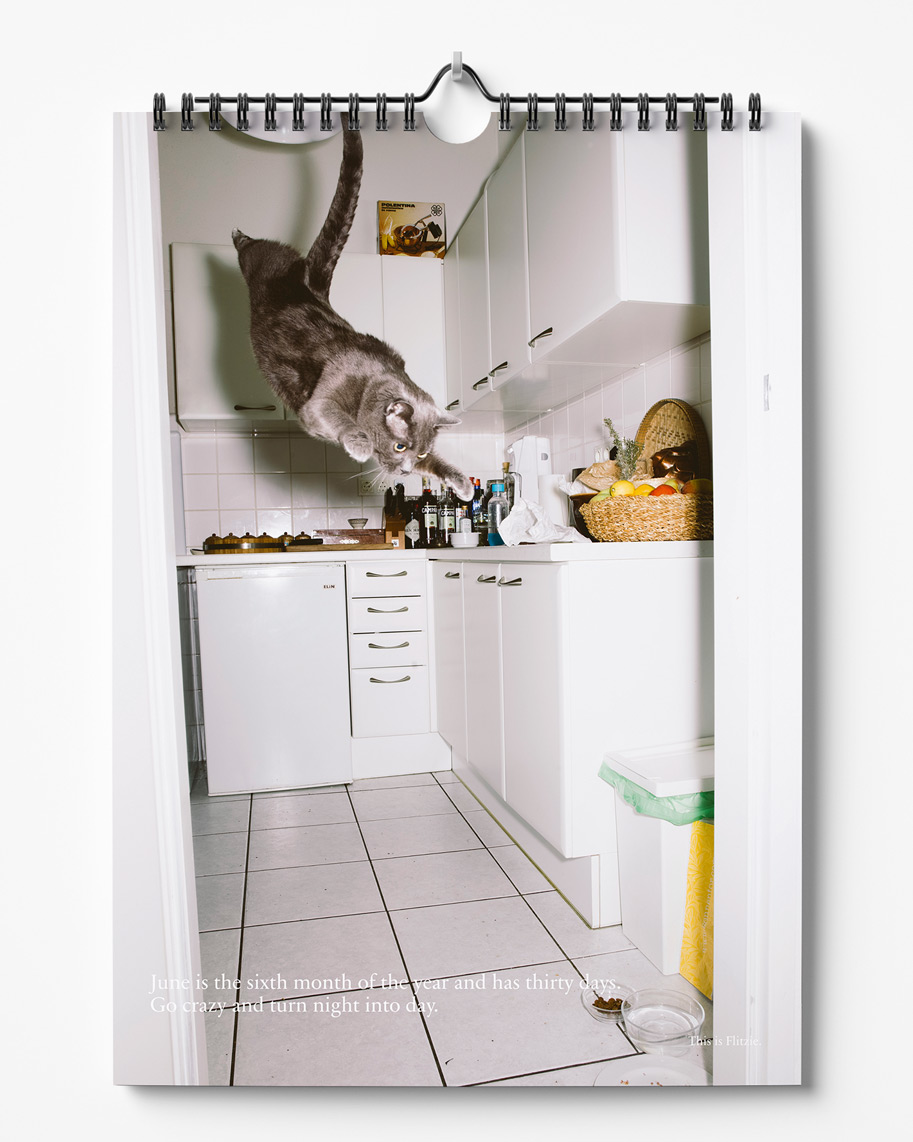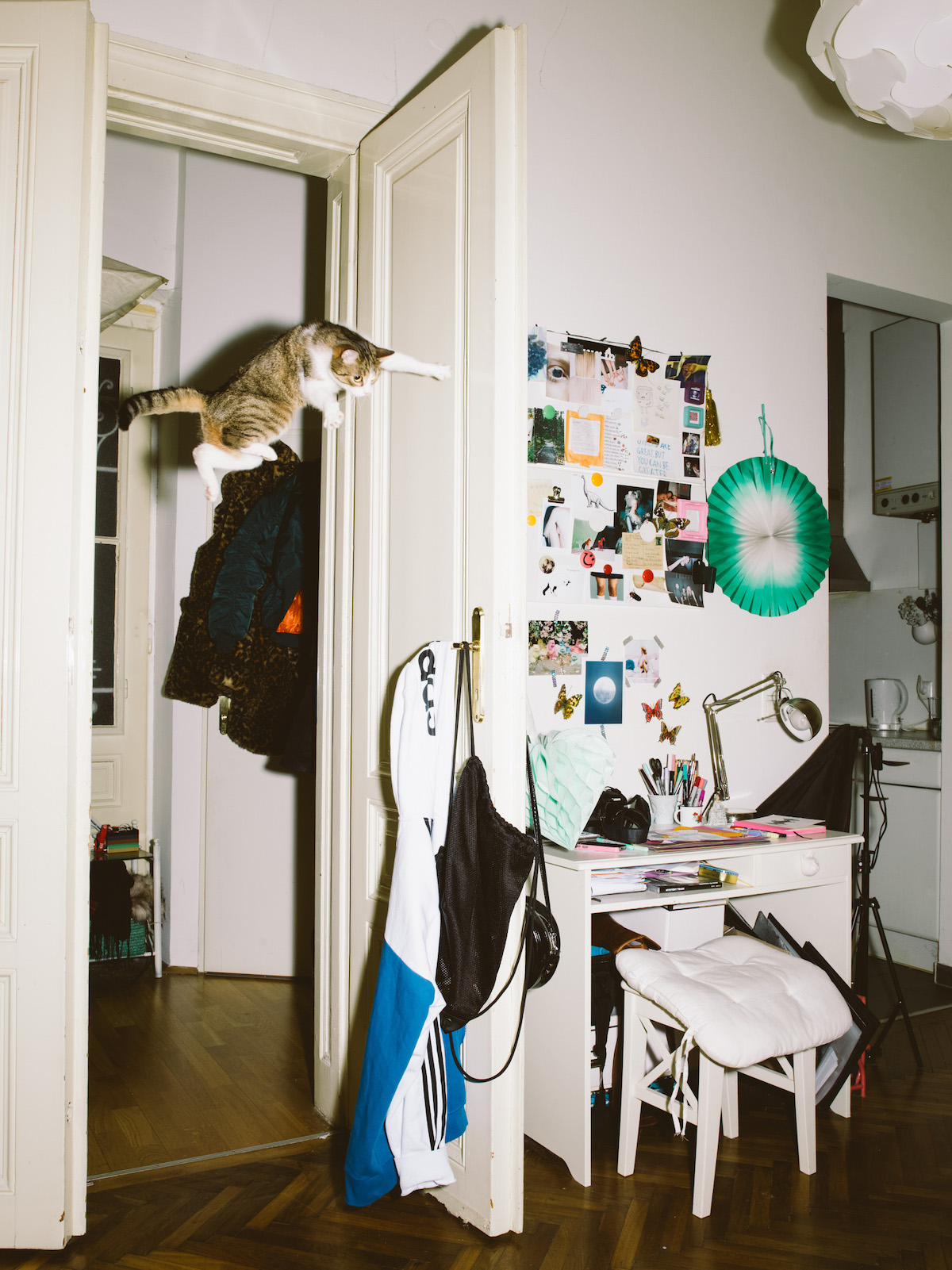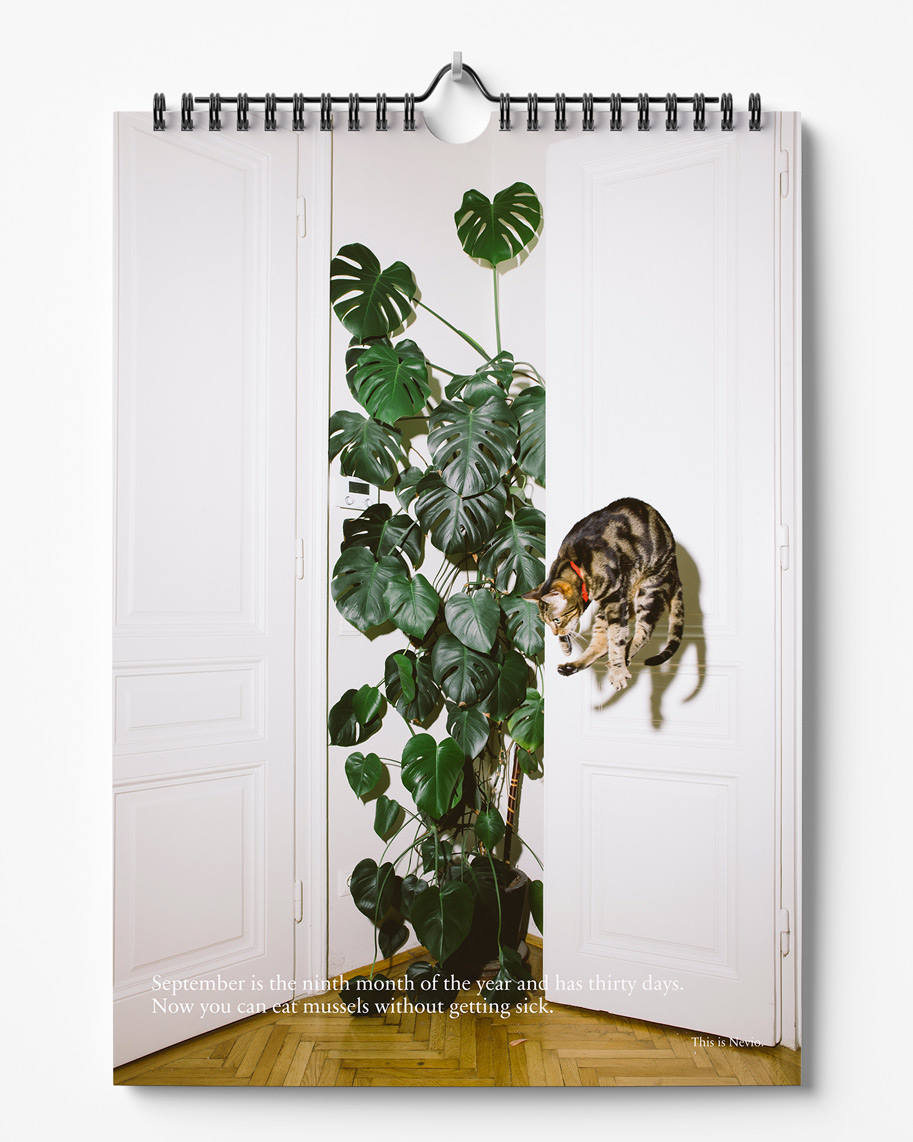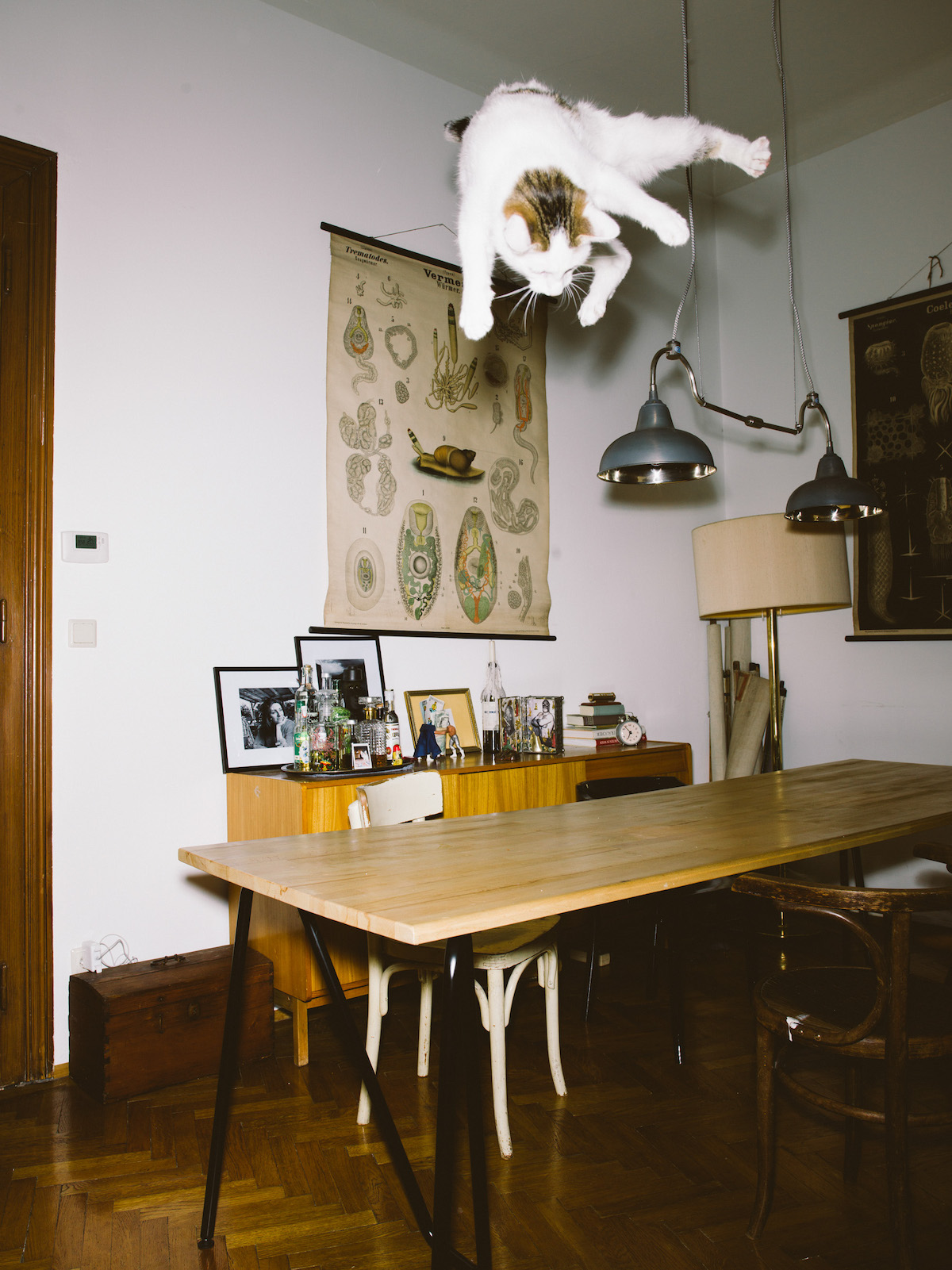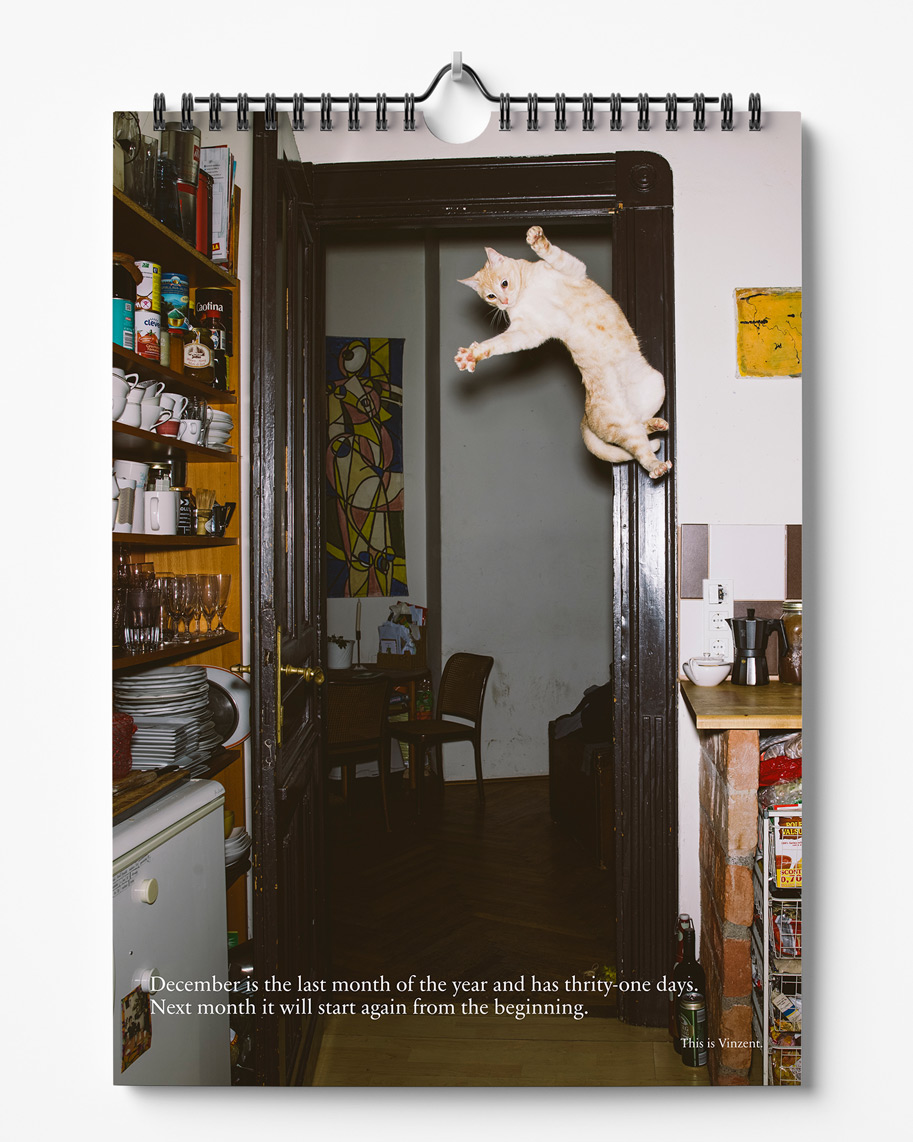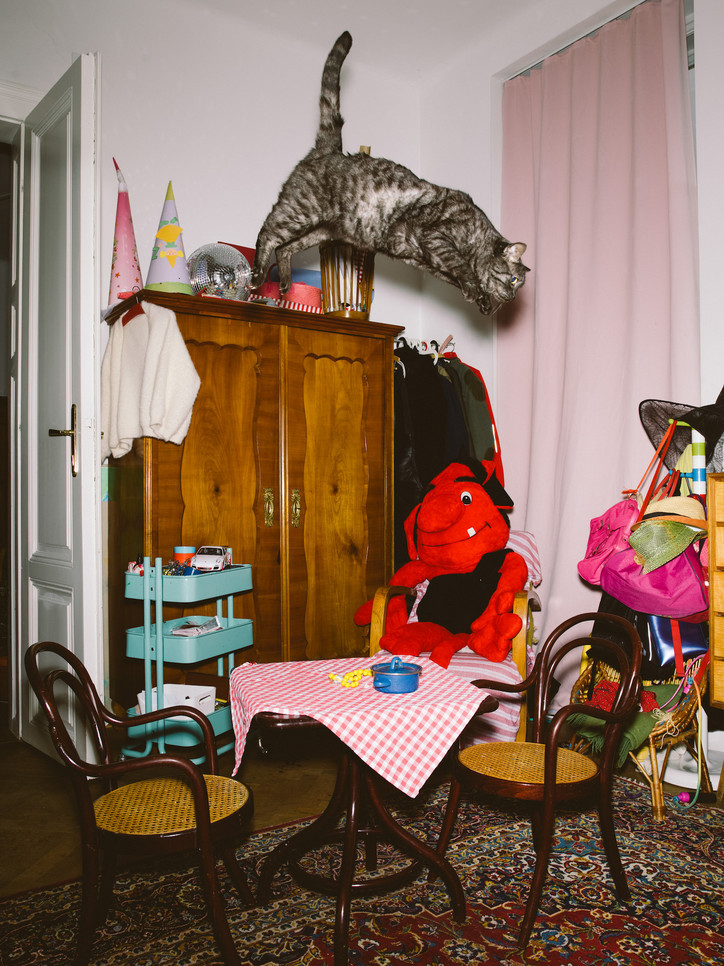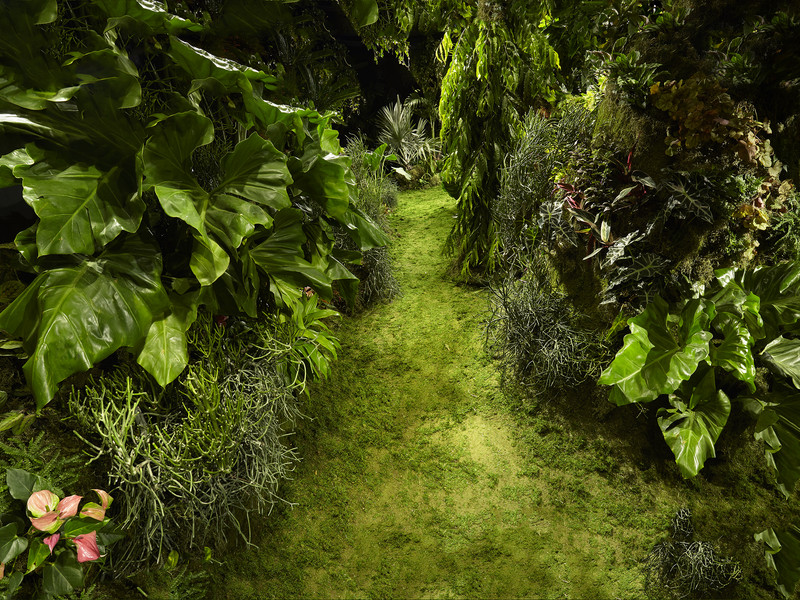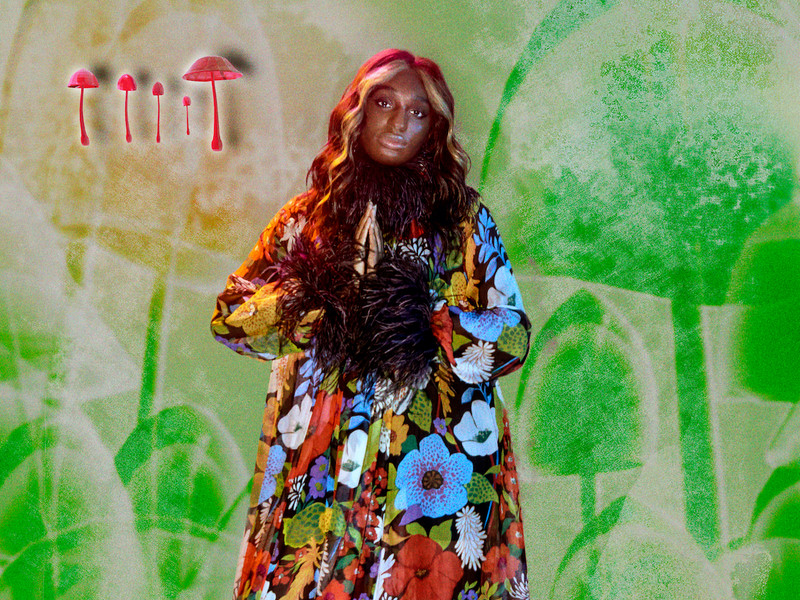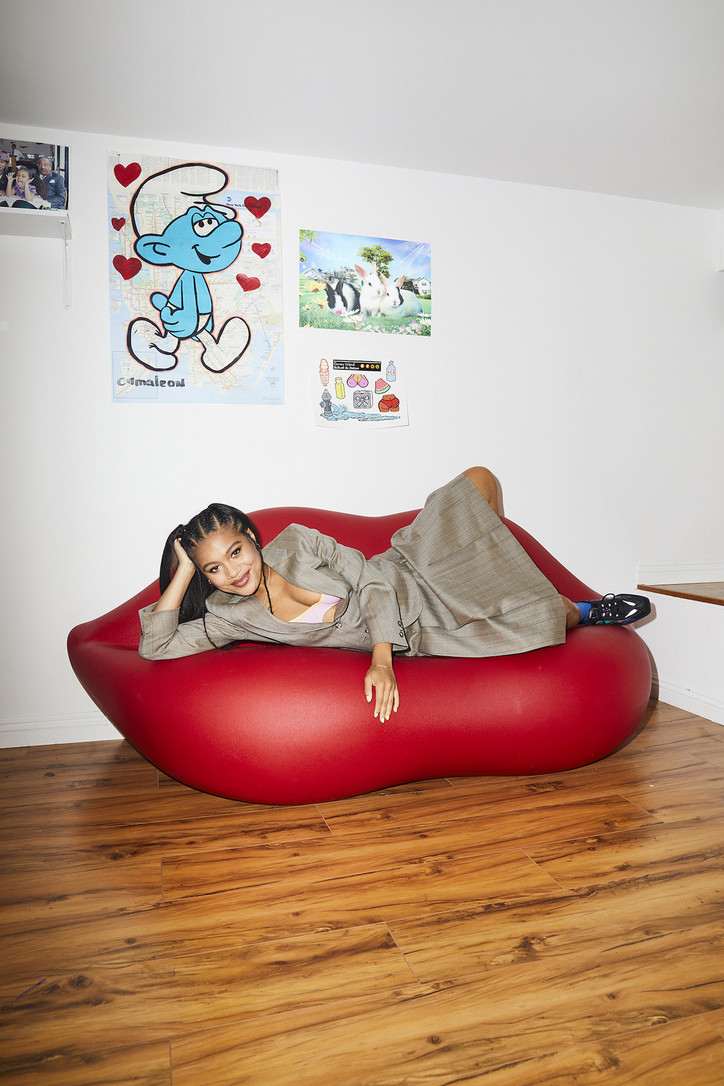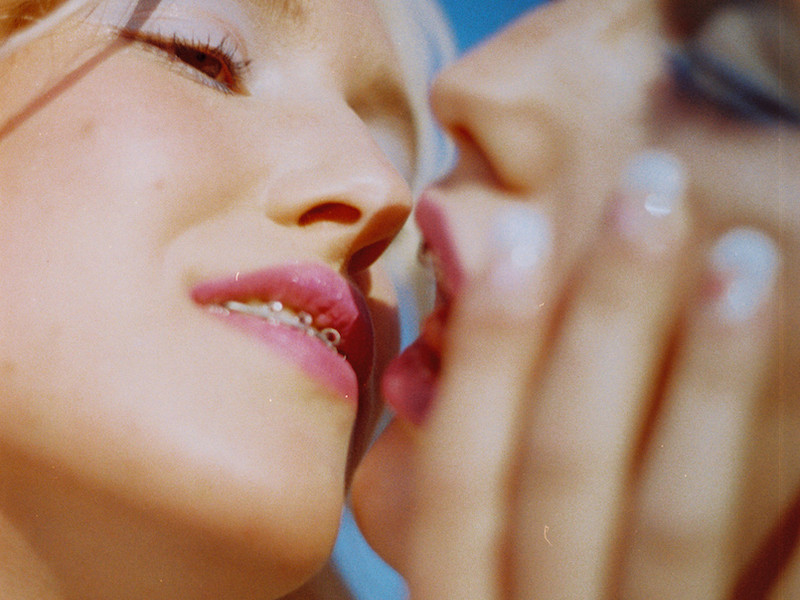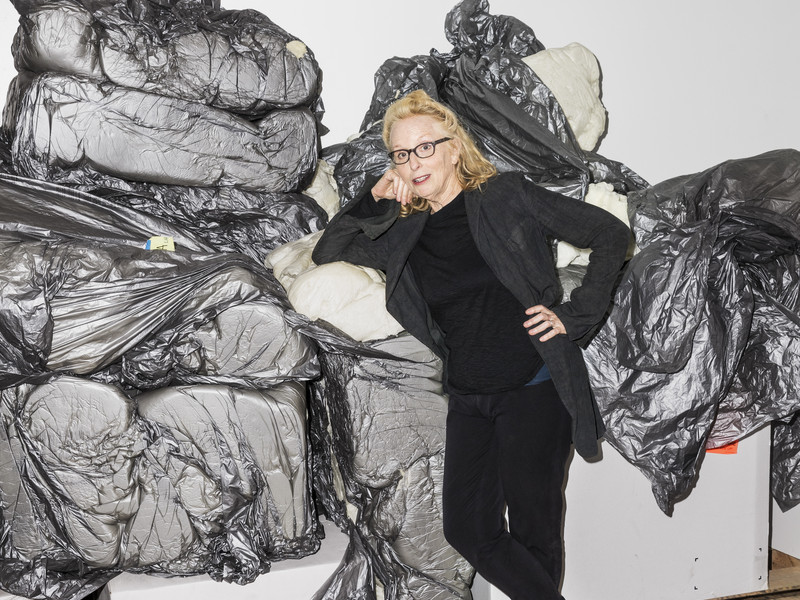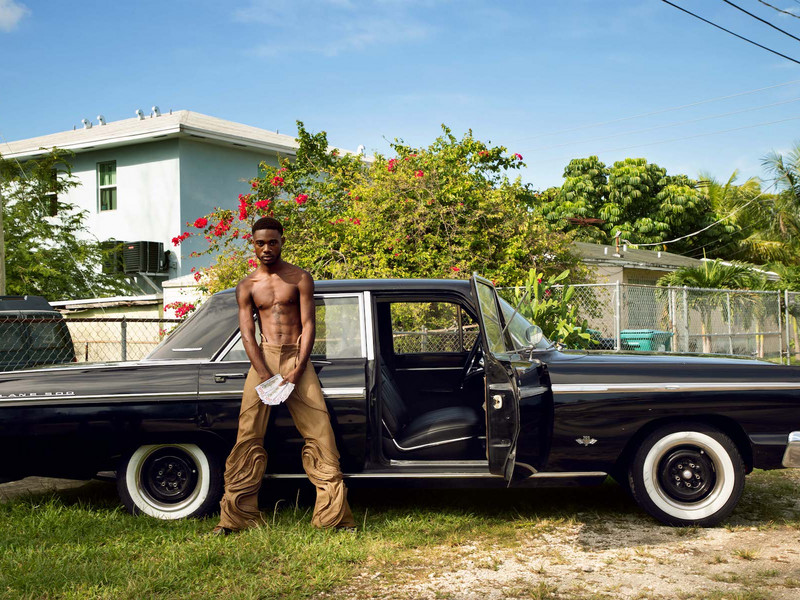On the opening night of his solo show in New York, he surprised the audience with karaoke adaptations of Funky Town by American disco-funk group Lipps Inc. and songs by the English Rock band Bauhaus. The impromptu performance marked Verna’s debut at the France-based Ceysson & Bénétière Gallery as well as his return to the stage, drawing on his 17 years of experience traveling across Europe under Gisele Vienne’s dance company.
Upon its founding in 2006, Ceysson & Bénétière dedicated its roster to the 1960’s & 70’s French art movement Supports/Surfaces, which detached the canvas from its stretchers in an attempt to critique Paris’s institutionalized art system. The ethos of Supports/Surfaces is fitting for Verna, who seems equally fascinated by the structures of culture and knowledge that support his image-making as he is with the content of the work itself. Throughout the show, images of numerous infamous figures from Michele Lamy to Siouxie Sue meld with landscape drawings, textile work, and shiny rainbow-colored stickers.
Verna’s strikingly tattooed face — evidence of a life of risk, spent in the margins — belies his calm, eloquent demeanor and the mature, thoughtful contemplation that permeates his body of work. I met with Verna over a video call from Paris in a dimly-lit New York City library one rainy Sunday to discuss his latest exhibition, his love and hate for the art world, and his plans for his next tattoo.
Hello.
Hi, how are you?
I’m good, I’m good. It’s great to talk to you. How was your time in New York?
I was cheated out of my brain. And I’m still in New York in my mind because it was a hell of a good time to be there. So I miss it already.
Well, I’ve found it quite insightful to see the exhibition. I know that the range of work spans both the breadth of your archive and mixes in new work. When did you start thinking about this show?
Well, it’s the third time I’ve exhibited in New York, but the first two times were group shows, and for a group show, the logic is really different for many reasons. So it was important for me to bring on some samples of different periods of my drawing work, and also different areas of artistry that I could provide. So, the easiest way to do that was to sing some songs.
In many ways this was really important for me, it’s my first exhibition ever with my new gallery. And it’s a big event for me. I’ve been working for 34 years with another gallery, and now it’s like our, how do you say… it was the wedding night.
Ha! Right.
It was also really nice that the public reception was really good. It was a mix of a bunch of different people, and I was doing this exactly for that. I don’t want to be a sixty-year-old artist, showing for a sixty-year-old audience.
That’s what’s been redemptive for me. There were youngsters, there were people of every age, shape, color, and gender. And it was just perfect to me.
I was told that you sang at the opening — you had a performance?
Yes, it’s a part of what I am, I’m a singer too. So it was not a gig, it was not serious, it was just something to treat — or to punish — the audience. And they quite liked it, so I was lucky.
